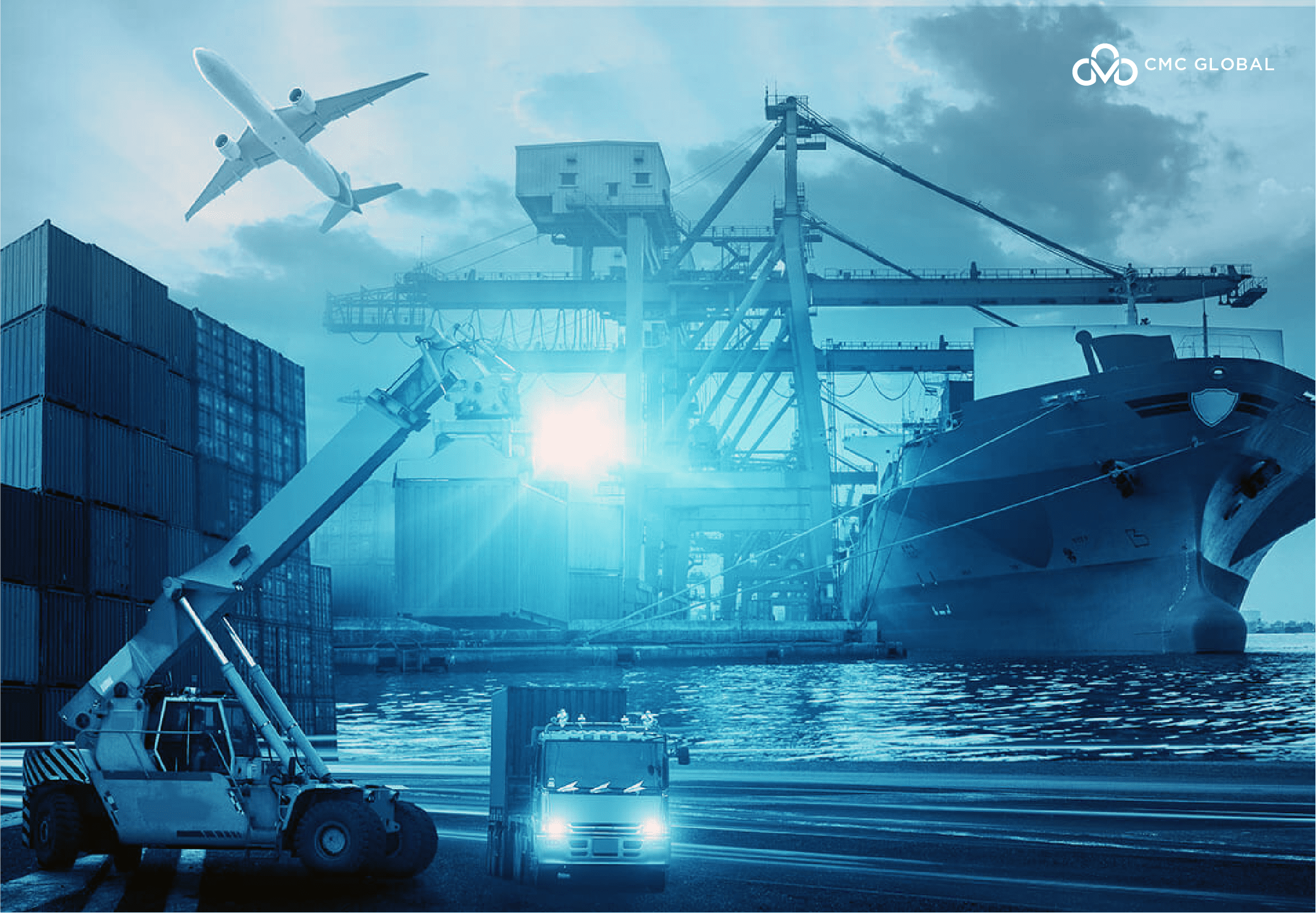With its heavy use of manual processes and large amounts of data stored in different ways and in different places, the logistics industry is expected to be one of the most impacted sectors when it comes to technology advancement and digital transformation. Artificial intelligence, automation, big data, etc., are all creating for Logistic businesses many opportunities and challenges in order to meet the growing needs of customers for faster and cheaper shipping methods.
1, Artificial and Augmented Intelligence

Over the years, the Logistics industry has integrated technology solutions related to artificial intelligence to build smart transportation systems, route planning, and user demand analysis. However, it is just the first step. The potential of artificial intelligence in the Logistics industry can include last-mile delivery robots, sustainable solutions, as well as warehouse automated picking systems, and predictive optimization software. All participants, from manufacturers, carriers, and suppliers to consumers, can benefit from these technology trends in 2020.
Along with Artificial intelligence, Augmented Intelligence is also predicted to have a spike in demand. Augmented intelligence is a combination of human intelligence and automated Artificial intelligence processes, thus overcoming the limitations of artificial intelligence in terms of experience, responsibility, customer service, flexibility, or common sense. According to Gartner, augmented intelligence will generate $2.9 trillion in business value and a 6.2 billion hour increase in global labor productivity by 2021.
2, Digital Twins

Digital twins may be one of the most exciting logistics trends in 2020. With digital twins, the physical and digital worlds can be combined into one, so for the first time, humans are capable of solving digital models of one or a part of an object. The potential of this technology in the logistics industry is enormous. In the shipping field, digital twins can be used to collect product and packaging data, thereby identifying potential weaknesses and recurring trends to improve future activities. Warehouse and facility systems can also use digital twins in creating accurate 3D models that simulate centers and test layout changes or introduce new devices. Moreover, logistics centers can optimize the digital twin’s ability to test different scenarios and increase efficiency. In addition, distribution networks can apply technology to provide real-time information, thereby improving delivery time and providing additional support for self-driving vehicles.
3, Real-time Supply Chain Visibility

Supply Chain Visibility (SCV), in 2020, is expected to take another step forward – becoming real-time. As customers and operators increasingly need real-time data, logistics, and supply chain businesses need to focus on deploying advanced SCV solutions to their operations. This data includes traffic patterns, weather, or road and bridge conditions used to reconfigure demand or redirect supply and optimize routes. Logistic companies that use fully integrated supply chains now show a 20% higher efficiency rate than non-integrated companies.
Supply chain visibility also couples with IoT sensor technology, an important platform for tracking shipments. IoT devices connected to the parcel allow the warehouse system to track inventory as well as manage vehicles and equipment through cloud computing. At the same time, container control provided by IoT is also easier thanks to real-time monitoring, thereby increasing fuel efficiency and performing maintenance activities. This has fueled the trend of cooperation between IoT startups and logistics companies. Take Hapag-Lloyd as proof. The company has chosen a startup called Global Tracker to operate a real-time container monitoring system named Hapag-Lloyd Live. By 2020, as demand for real-time tracking is on the rise, this great partnership is expected to grow even stronger.
4, Blockchain

Introduced in 2008, blockchain has grown rapidly to now become one of the most cutting-edge logistics technology trends. Small-scale operations and pilot projects, when applying Blockchain, have shown outstanding efficiency. CargoX is a startup emerging by bringing blockchain applications into the logistics industry: the company has used the public Ethereum Network to ensure the secure transfer of information. Other big names are also interested in the blockchain: UPS and Warren Buffet’s BNSF Railway have implemented Blockchain in Transport Alliance.
Blockchain allows all participants to share and access the same ledger of transactions, ensuring transparency and potentially preventing users from hacking or tricking the system, thus eliminating the need for third-party involvement. In the logistics industry, this technology can make it easier and safer for carriers or shippers to share sensitive data; companies can also create financial solutions and commercial supply chains, like Maersk and IBM’s blockchain joint venture called TradeLens. Currently, five of the world’s six largest aircraft carriers have joined the platform, and more than half of all container shipping at sea is currently appearing on TradeLens.
However, to fully apply blockchain, logistics enterprises still need to implement some other premises, such as digitalizing, standardizing, and cleaning data or forming an ecosystem of supply chain partners’ applications to use industry-wide standards in a blockchain-sharing environment.
5, Data Standards and Advanced Analytics

Traditionally, data in the post-industry is always siloed. Companies have stored data in their own way, resulting in a fragmented ecosystem, creating great inefficiencies and making it difficult to digitize operations. One of the biggest logistics technology trends for 2020 indicates that siloed data will no longer be the choice of companies if they want to keep up with the rapid development of the market. For example, new data standards have finally been established in container shipping, thanks to the launch of the Digital Container Transport Association (DCSA) in 2019. DCSA’s mission is to create information technology standards to digitize and enhance interoperability, thereby providing more efficient shipping services for both customers and shipping lines. Just a few months after its launch, the organization released its first Industrial Blueprint, announcing new industry standards for data processes used in container shipping.
However, DCSA only represents the data standardization movement in container shipping, and it will take time for the association to develop new standards covering different shipping sub-sectors. Meanwhile, Traxens, an IoT company that provides high-value data and services to the supply chain industry, claims to have led the trend of developing the first standards for smart container data exchange published by the United Nations Centre for Trade Facilitation and Electronic Business.
Other areas of the logistics industry also face data inconsistency, which has led many startups to focus on building advanced analytical platforms, helping larger businesses clean and digitize their data, thereby using it for advanced analysis and optimizing forecasts. This includes better supply chain visibility, demand forecasting, proactive operational planning, predictive maintenance, detection of unexpected conditions, and improved delivery quality at the final stage. When data is standardized and digitized across the logistics industry, all companies will benefit.
Collaboration with IT businesses: the answer for Logistic companies
Through the above analysis, it can be seen that digital transformation is an inevitable trend in all industries, including Logistics. In order to meet the increasing demands of customers, Logistics enterprises are forced to apply standardized advanced technology solutions. Therefore, cooperation with a company providing IT products and services is the best option. CMC Global is proud to be a strategic partner of many logistics and supply chain businesses. CMC Global’s competence in implementing Logistics projects has been proven by the customers’ evaluation in the industry. This shows the serious investment of CMC Global in investing in improving service quality, providing optimal solutions for customers, constantly improving our professional capacity, and perfecting our domain knowledge, as well as the latest trends and new technology solutions.
(Source: transmetrics.eu)




